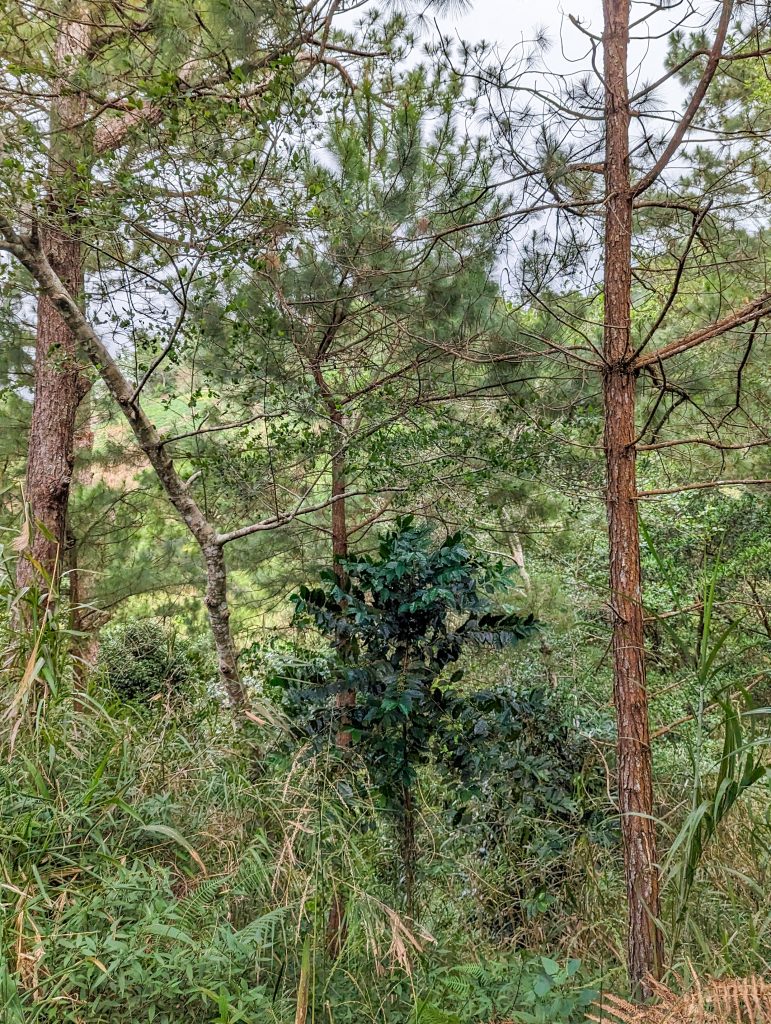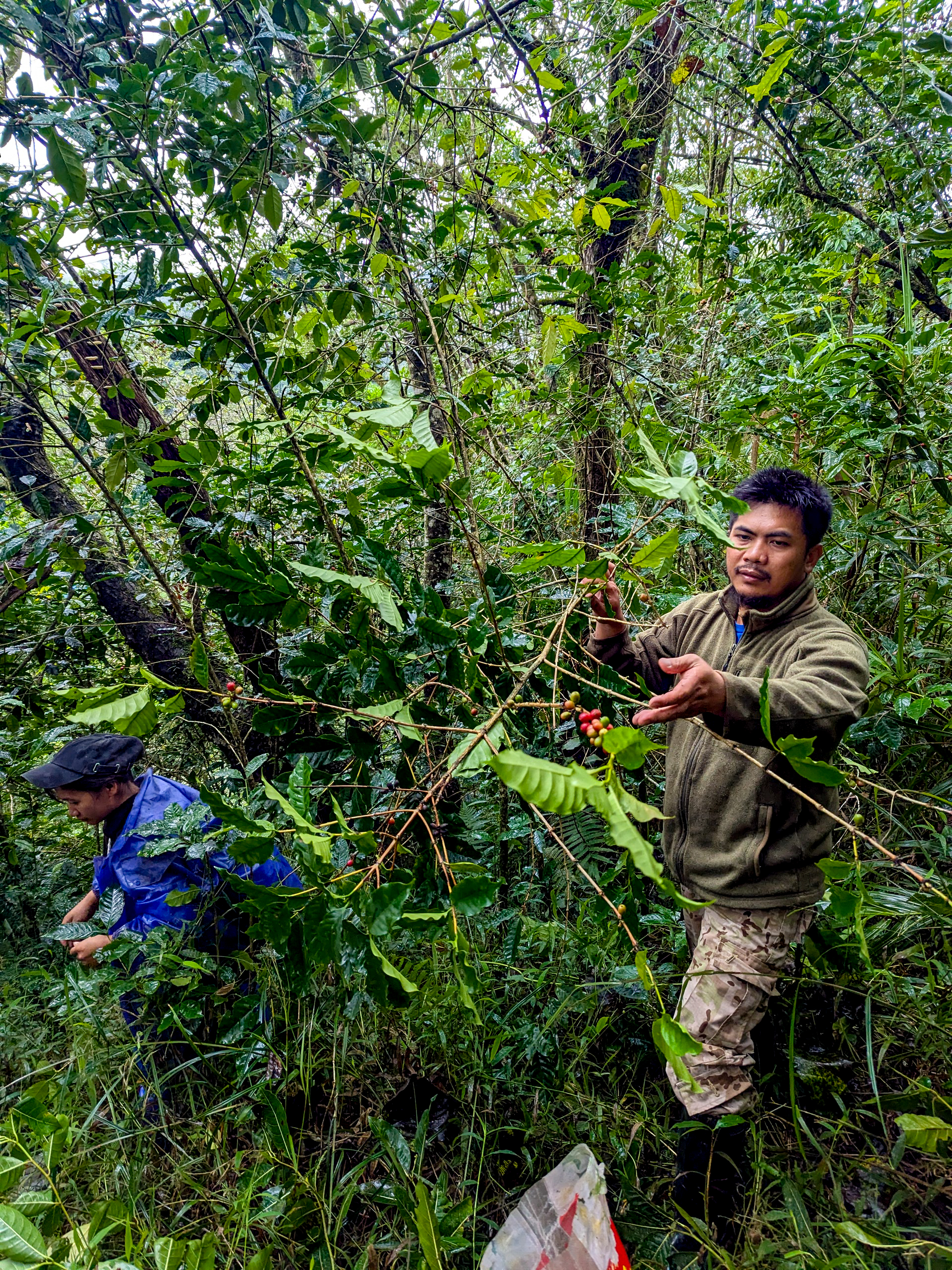This is the INTRO of a 5-part series on Shade Grown, agroforsestry coffees.
Coffee is often described in terms of flavor, origin, and cultivation techniques. Less often is it recognized as a participant in its own ecosystem. At our farm, coffee grows not under artificial shade or in cleared fields, but within the rainforest itself. Agroforestry practices allow coffee to thrive alongside native trees, understory plants, and forest wildlife. Farmers become one species among many, interacting with soil, water, and biodiversity in ways that sustain both crop and forest.
Soil here is alive, enriched continuously by fallen leaves, decomposing organic matter, and the roots of diverse plant species. Water is regulated naturally: canopy cover slows rainfall, reduces runoff, and allows aquifers to recharge. The forest microclimate buffers coffee plants against extreme heat, erratic rainfall, and seasonal droughts. Pest and disease dynamics are managed by the forest itself. Birds, bats, ants, and microbes maintain population balance, reducing the need for synthetic interventions.
Coffee quality is inseparable from this environment. Slow maturation under the rainforest canopy produces dense beans rich in complex acids, sugars, and aromatic compounds. Herbal, floral, and tea-like notes emerge naturally from interactions with light, soil, and microbial communities. Agroforestry coffee is therefore both an ecological and sensory product: a crop that embodies the rainforest’s processes and rhythms.

Communities benefit alongside the environment. Diversified yields—timber, fruit, honey, and coffee—enhance livelihoods, strengthen cultural ties, and reduce economic vulnerability. Sustainability is not imposed; it emerges from participation in the living system.
This series explores the ways coffee interacts with the rainforest, from soil and water to biodiversity, flavor, and human well-being. Each article highlights the intricate web of relationships that makes shade-grown coffee more than a product: it is a living expression of ecological harmony, resilience, and coexistence.
Here’s what we’ll cover:
Part 1: Biodiversity and Forest Ecology
- What Shade-Grown Really Means
- Coffee in the Rainforest Understory
- Biodiversity in Shade Farms
- Local Relevance: Luzon Ecology
- Pollinators and Yield Stability
Part 2: Soil, Water, and Carbon
- Shade Trees and Soil Fertility
- Water Regulation in Shade Farms
- Shade and Climate Buffering
- Carbon Sequestration in Coffee Agroforestry
- Mycorrhizal Fungi in Shaded Soils
Part 3: Pest and Disease Balance
- Shade as Pest Control
- Disease Modulation by Shade
- Pest Regulation through Shade Diversity
Part 4: Coffee Quality and Flavor
- Soil, Light, and Bean Density
- Acidity and Flavor Development
- Herbal and Tea-Like Notes
- Brewing and Acidity Extraction
Part 5: Farmers, Communities, and Sustainability (Coming Oct 18, 2025)
- Farmer Livelihoods and Diversification
- Community and Cultural Value
- Resilience to Market and Climate Shocks
- The Future of Coffee and Forests
You can also find all of our research sources on our Study Source Index page.

